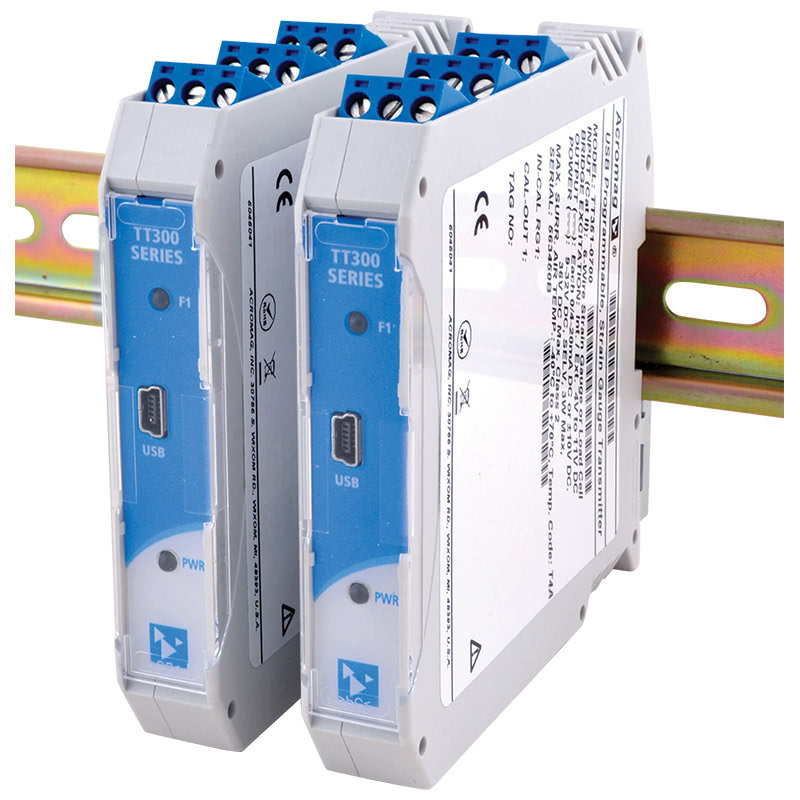Acromag’s new TT351 load cell transmitter or strain gauge signal conditioners use software. This allows them to quickly select from a wide variety of sensor measurement options. A USB port simplifies setup on a Windows PC or Android mobile device with Acromag’s AgilityTM app. The software provides powerful signal conditioning capabilities for precise conversion of bridge inputs to process current or voltage control signals.
Load Cell Transmitter Software
Software menus help users set the sensor type, bridge configuration, excitation source, filtering level, and input/output ranges. Advanced capabilities let users fine tune scaling of I/O signals, adjust excitation levels and also calibrate the bridge. Universal output supports six ranges including 4-20mA, 0-10V and ±10V. Flexible power accepts a 9-32V DC supply at the terminals. Plus a rail power bus option can supply multiple units from a single connection or establish redundant power. The narrow 17.5mm housing mounts easily on a DIN rail. Hazardous location approvals, high noise immunity, and a -40 to 70°C operating range make these transmitters ideal for use in harsh environments.
“These software-configured bridge sensor transmitters offer capabilities not possible with DIP switches or pot adjustments for a broad range of load cell, strain gauge, weight and force measurements,” stresses Robert Greenfield, Acromag’s Business Development Manager.
The TT351 input circuit allows true 6-wire bridge measurement. Also it includes an adjustable bridge excitation supply (4 to 11V DC) with a remote sense feature. Sense wires ensure the programmed excitation voltage is applied at the sensor and enable lead-wire compensation. The differential input performs true ratiometric conversions for extremely stable measurements that remain accurate over time and temperature. Plus, lead break detection is inherent in the device. Three-way isolation between input, output and power increases safety and noise immunity.
Advanced Signal Processing
Advanced signal processing capabilities, variable range input, and convenient USB programming make this instrument very versatile for strain/load measurement. One model can process strain gauge, load cell, and milliVolt input signals from 1-10mV/V. Initial bridge offsets or forces can be automatically removed with null compensation, tare, and zero-balance bridge functions. An internal half-bridge can perform half- and quarter-bridge completion with precision resistor pairs or bias a floating milliVolt input signal. A custom input signal linerariser function supports up to 25 user-defined signal breakpoints. Flexible scaling is independently adjustable for input and output. To suppress noise effects, users can set a variable digital input filter level or average several samples. Shunt calibration tools with a simulation calculator enable rescaling of the transmitter’s indicated strain by modifying software gain and/or the instrument gauge factor. To test or verify operation, a software diagnostics screen polls the unit, then displays measured and computed values.
For more information on the TT351 Load Cell Transmitter, contact us.
